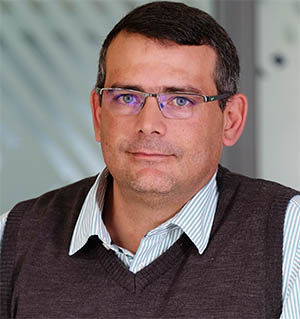An increasingly digitally-driven business environment is not only providing ample benefits to employees and business processes, but also to cybercriminals.
 By Riaan Badenhorst, GM at Kaspersky in Africa
By Riaan Badenhorst, GM at Kaspersky in Africa
Today, every industry and organisation has its own unique data to protect, and uses its own set of applications, technologies, and so forth to run smoothly.
All of these factors introduce an enormous number of variables into possible methods of executing cybercrime, and businesses need to pay attention to their cybersecurity strategies to ensure adequate protection from such threats.
Over the past few years, a blurring of boundaries between the types of threats and types of threat actors has occurred. Methods and tools that were previously a threat to a limited number of organisations have spread to the broader market and every business, no matter size or geographical location, is at risk.
And, with enterprises increasingly falling victim to advanced and targeted attacks, it has become very clear that a successful defense to such cybercriminal activity requires a new method.
Not only do businesses need to take a proactive approach to cybersecurity today, but they have to be able to constantly adapt their security controls to the ever-changing threat environment. They need to look at and consider the full picture of cybersecurity. The only way to achieve this, while keeping up with these changes, is to implement what we call a ‘true cybersecurity’ approach.
Ensuring true cybersecurity for enterprise IT infrastructure requires multi-layered practices. By multiple layers, we mean not only using overlapping protective technologies or covering different levels of IT network, but also utilising a range of solutions that possess qualities allowing corporate security to dynamically adapt in line with the ever-changing threat landscape.
True cybersecurity considers the following:
- HuMachine Intelligence – this involves humans and machines uniting their expertise to develop intelligence that can spearhead efficient detection. Such a detection process involves the use of innovative automated malware detection systems that are steered in the right direction by security experts.
- Adaptive – cybersecurity approaches must be flexible and have the ability to adapt, in a certain situation, as required. An adaptive cybersecurity strategy looks at threat prevention, the detection of targeted and complex attacks, incident response and the prediction of future attacks to ensure risk mitigation and protection.
- Agile – cybersecurity processes are critical to ensure business protection – but if they are too complex to manage, they may end up becoming ineffective. Such processes must be easy to manage and cost effective for the type and size of the business.
- Tested and proven security solutions – these solutions must deliver the best protection in class. The best solutions are those able to adapt to the continually evolving threat landscape, to effectively protect the business, not only today, but into the future.
Cybersecurity in today’s world is consequently about more than just protecting devices and corporate networks. It’s about developing a cyber-immune ecosystem where everything connected is protected.
While this will take some time and work to achieve, in the interim, businesses should consider implementing a true cybersecurity approach to their protection strategies – as a combination of approaches in an evolving cyberthreats landscape is more effective than prevention alone.
